20 Most Popular Theories of Motivation in Psychology
 To describe the indescribable seems to be the ambitious undertaking of motivation theories.
To describe the indescribable seems to be the ambitious undertaking of motivation theories.
The many approaches to defining what drives human behavior are best understood when considering the very purpose of creating them, be it increased performance, goal pursuit, resilience, or relapse prevention, to name a few.
There is nothing more practical than a good theory.
Kurt Lewin
There is no single motivation theory that explains all aspects of human motivation, but these theoretical explanations do often serve as the basis for the development of approaches and techniques to increase motivation in distinct areas of human endeavor.
This article briefly summarizes existing theories of motivation and their potential real-world applications.
Before you continue, we thought you might like to download our three Goal Achievement Exercises for free. These detailed, science-based exercises will help you or your clients create actionable goals and master techniques to create lasting behavior change.
This Article Contains:
What is Motivation Psychology?
Motivation psychologists usually attempt to show how motivation varies within a person at different times or among different people at the same time. The purpose of the psychology of motivation is to explain how and why that happens.
Broad views of how to understand motivation were created by psychologists based on various types of analyses. Cognitive analyses, behavioral anticipation, and affective devices are often used to account for motivation in terms of expecting an end-state or goal.
Motivation psychology is a study of how biological, psychological, and environmental variables contribute to motivation. That is, what do the body and brain contribute to motivation; what mental processes contribute; and finally, how material incentives, goals, and their mental representations motivate individuals.
Psychologists research motivation through the use of two different methods. Experimental research is usually conducted in a laboratory and involves manipulating a motivational variable to determine its effects on behavior.
Correlational research involves measuring an existing motivational variable to determine how the measured values are associated with behavioral indicators of motivation.
Whether you think you can, or think you can’t, you’re right.
Henry Ford, 1863–1947
To be motivated means to be moved into action. We are induced into action or thought by either the push of a motive or the pull of an incentive or goal toward some end-state. Here a motive is understood as an internal disposition that pushes an individual toward a desired end-state where the motive is satisfied, and a goal is defined as the cognitive representation of the desired outcome that an individual attempts to achieve.
While a goal guides a behavior that results in achieving it, an incentive is an anticipated feature of the environment that pulls an individual toward or away from a goal. Incentives usually enhance motivation for goal achievement. Emotions act like motives as well. They motivate an individual in a coordinated fashion along multiple channels of affect, physiology, and behavior to adapt to significant environmental changes.
See our discussion of the motivation cycle and process in the blog post entitled What is Motivation.
Theories of Motivation

In short, content theories explain what motivation is, and process theories describe how motivation occurs.
There are also a large number of cognitive theories that relate to motivation and explain how our way of thinking and perceiving ourselves and the world around us can influence our motives.
From self-concept, dissonance and mindset to values, orientation and perceived control, these theories explain how our preference toward certain mental constructs can increase or impair our ability to take goal-directed action.
Theories of motivation are also grouped by the field of human endeavor they apply to. Several theories relate to motivating employees where incentives and needs take a central stage as well as theories used in sports and performance psychology where affect is considered a more prominent driver of human behavior. Some of these theories are also applied to education and learning.
Read our insightful post on motivation in education.
The self-concordance model of goal setting differentiates between four types of motivation (Sheldon & Elliot, 1999). These are:
External motivation
Goals are heavily guided by external circumstances and would not take place without some kind of reward or to prevent a negative outcome.
For example, an individual who clocks extra hours in their day job purely to receive a bigger paycheck.
Introjected motivation
Goals are characterized by self-image or ego-based motivation, reflecting the need to keep a certain self-image alive.
For example, our worker in the example above staying longer in the office so that they are perceived as a ‘hard worker’ by their manager and co-workers.
Identified motivation
The actions needed to accomplish the goal are perceived as personally important and meaningful, and personal values are the main drivers of goal pursuit.
For example, the worker putting in extra hours because their personal values align with the objective of the project they are working on.
Intrinsic motivation
When a behavior is guided by intrinsic motivation, the individual strives for this goal because of the enjoyment or stimulation that this goal provides. While there may be many good reasons for pursuing the goal, the primary reason is simply the interest in the experience of goal pursuit itself.
For example, the worker spends more time at their job because they enjoy and are energized by using their skills in creativity and problem-solving.
Goals guided by either identified or intrinsic motivation can be considered self-concordant. A self-concordant goal is personally valued, or the process towards the goal is enjoyable and aligns with interests. Self-concordant goals are associated with higher levels of wellbeing, enhanced positive mood, and higher levels of life satisfaction compared to non-self-concordant goals.
Content Theories of Motivation
Maslow’s theory of the hierarchy of needs, Alderfer’s ERG theory, McClelland’s achievement motivation theory, and Herzberg’s two-factor theory focused on what motivates people and addressed specific factors like individual needs and goals.
Maslow’s theory of the hierarchy of needs
The most recognized content theory of motivation is that of Abraham Maslow, who explained motivation through the satisfaction of needs arranged in a hierarchical order. As satisfied needs do not motivate, it is the dissatisfaction that moves us in the direction of fulfillment.
Needs are conditions within the individual that are essential and necessary for the maintenance of life and the nurturance of growth and well-being. Hunger and thirst exemplify two biological needs that arise from the body’s requirement for food and water. These are required nutriments for the maintenance of life.
The body of man is a machine which winds its own spring.
J. O. De La Mettrie
Competence and belongingness exemplify two psychological needs that arise from the self’s requirement for environmental mastery and warm interpersonal relationships. These are required nutriments for growth and well-being.
Needs serve the organism, and they do so by:
- generating wants, desires, and strivings that motivate whatever behaviors are necessary for the maintenance of life and the promotion of growth and well-being, and
- generating a deep sense of need satisfaction from doing so.
Maslow’s legacy is the order of needs progressing in the ever-increasing complexity, starting with basic physiological and psychological needs and ending with the need for self-actualization. While basic needs are experienced as a sense of deficiency, the higher needs are experienced more in terms of the need for growth and fulfillment.
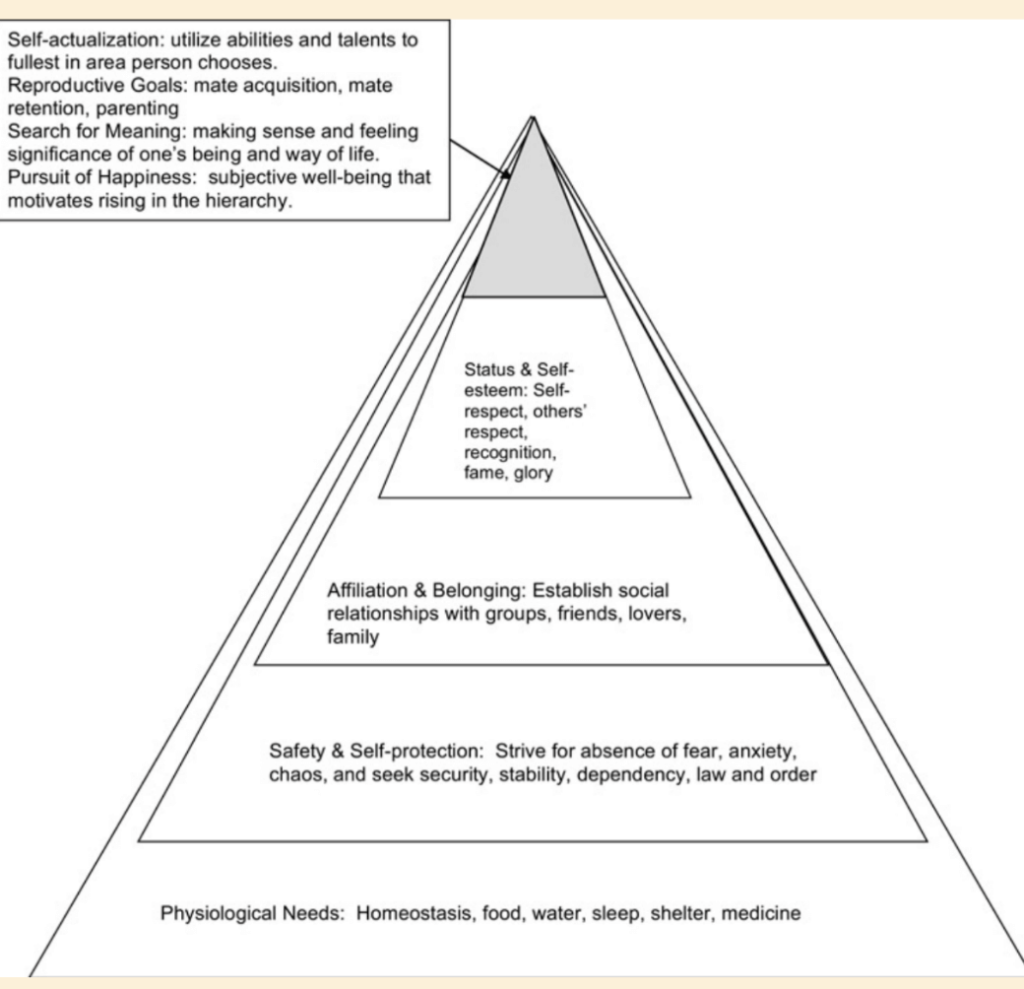
Alderfer’s ERG theory
Alderfer’s theory of motivation expands on the work of Maslow and takes the premise of need categories a bit further. He observes that when lower needs are satisfied, they occupy less of our attention, but the higher needs tend to become more important, the more we pursue them.
He also observed a phenomenon that he called the frustration-regression process where when our higher needs are thwarted, we may regress to lower needs. This is especially important when it comes to motivating employees.
When a sense of autonomy or the need for mastery is compromised, say because of the structure of the work environment, the employee may focus more on the sense of security or relatedness the job provides.
McClelland’s achievement motivation theory
McClelland took a different approach to conceptualize needs and argued that needs are developed and learned, and focused his research away from satisfaction. He was also adamant that only one dominant motive can be present in our behavior at a time. McClelland categorized the needs or motives into achievement, affiliation, and power and saw them as being influenced by either internal drivers or extrinsic factors.
Among all the prospects which man can have, the most comforting is, on the basis of his present moral condition, to look forward to something permanent and to further progress toward a still better prospect.
Immanuel Kant
The drive for achievement arises out of the psychological need for competence and is defined as a striving for excellence against a standard that can originate from three sources of competition: the task itself, the competition with the self, and the competition against others.
High need for achievement can come from one’s social environment and socialization influences, like parents who promote and value pursuit and standards of excellence, but it can also be developed throughout life as a need for personal growth towards complexity (Reeve, 2014).
Herzberg’s motivation-hygiene theory
Herzberg’s two-factor theory, also known as motivation-hygiene theory, was originally intended to address employee motivation and recognized two sources of job satisfaction. He argued that motivating factors influence job satisfaction because they are based on an individual’s need for personal growth: achievement, recognition, work itself, responsibility, and advancement.
On the other hand, hygiene factors, which represented deficiency needs, defined the job context and could make individuals unhappy with their job: company policy and administration, supervision, salary, interpersonal relationships, and working conditions.
Motivation theories explained in 10 minutes – EPM
Process Theories of Motivation
Process theories like Skinner’s reinforcement theory, Victor Vroom’s expectancy theory, Adams’ equity theory, and Locke’s goal-setting theory set out to explain how motivation occurs and how our motives change over time.
Reinforcement theory
The most well-known process theory of motivation is the reinforcement theory, which focused on the consequences of human behavior as a motivating factor.
Based on Skinner’s operant conditioning theory, it identifies positive reinforcements as promoters that increased the possibility of the desired behavior’s repetition: praise, appreciation, a good grade, trophy, money, promotion, or any other reward (Gordon, 1987).
It distinguished positive reinforcements from negative reinforcement and punishment, where the former gives a person only what they need in exchange for desired behavior, and the latter tries to stop the undesired behavior by inflicting unwanted consequences.
See our articles on Positive Reinforcement in the Workplace and Parenting Children with Positive Reinforcement.
Other process motivation theories combine aspects of reinforcement theory with other theories, sometimes from adjacent fields, to shine a light on what drives human behavior.
Adams’ equity theory of motivation
For example, Adams’ equity theory of motivation (1965), based on Social Exchange theory, states that we are motivated when treated equitably, and we receive what we consider fair for our efforts.
It suggests that we not only compare our contributions to the amount of rewards we receive but also compare them to what others receive for the same amount of input. Although equity is essential to motivation, it does not take into account the differences in individual needs, values, and personalities, which influence our perception of inequity.
Vroom’s expectancy theory
Victor Vroom’s expectancy theory (1964), on the other hand, integrates needs, equity, and reinforcement theories to explain how we choose from alternative forms of voluntary behavior based on the belief that decisions will have desired outcomes. Vroom suggests that we are motivated to pursue an activity by appraising three factors:
- Expectancy that assumes more effort will result in success
- Instrumentality that sees a connection between activity and goal
- Valence which represents the degree to which we value the reward or the results of success.
Locke’s goal-setting theory
Finally, Locke and Latham’s (1990) goal-setting theory, an integrative model of motivation, sees goals as key determinants of behavior. Possibly the most widely applied, the goal-setting theory stresses goal specificity, difficulty, and acceptance and provides guidelines for how to incorporate them into incentive programs and management by objectives (MBO) techniques in many areas.
Lock’s recipe for effective goal setting includes:
- Setting of challenging but attainable goals. Too easy or too difficult or unrealistic goals don’t motivate us.
- Setting goals that are specific and measurable. These can focus us toward what we want and can help us measure the progress toward the goal.
- Goal commitment should be obtained. If we don’t commit to the goals, then we will not put adequate effort toward reaching them, regardless of how specific or challenging they are.
- Strategies to achieve this could include participation in the goal-setting process, the use of extrinsic rewards (bonuses), and encouraging intrinsic motivation through providing feedback about goal attainment. It is important to mention here that pressure to achieve goals is not useful because it can result in dishonesty and superficial performance.
- Support elements should be provided. For example, encouragement, needed materials and resources, and moral support.
- Knowledge of results is essential. Goals need to be quantifiable, and there needs to be feedback.
There are several articles on effective goal setting in our blog series that cover Locke’s theory and it’s many applications.
Cognitive Theories of Motivation

They address specific cognitive phenomena that can influence motivation, represent a particular factor of motivation, describe a form of expression of motivation, or explain a process through which it can occur or be enhanced.
The list of cognitive phenomena is by no means comprehensive, but it does give us a taste of the complexity of human motivation and includes references for those who want to read further into more nuanced topics:
- Plans (Carver, Scheier, & Weintraub, 1998)
- Goals (Locke & Latham, 2002)
- Implementation intentions (Gollwitzer, 1999)
- Deliberative versus implementation mindsets (Gollwitzer & Kinney, 1989)
- Promotion versus prevention orientations (Higgins, 1997)
- Growth versus fixed mindsets (Dweck, 2006)
- Dissonance (Festinger, 1957; Harmon-Jones & Mills, 1999)
- Self-efficacy (Bandura, 1986)
- Perceived control (Skinner, 1996)
- Reactance theory (Brehm, 1966)
- Learned helplessness theory (Miller & Seligman, 1975)
- Mastery beliefs (Diener & Dweck, 1978)
- Attributions (Wiener, 1986)
- Values (Eccles & Wigfield, 2002)
- Self-concept (Markus, 1977)
- Possible selves (Oyserman, Bybee, & Terry, 2006)
- Identity (Eccles, 2009)
- Self-regulation (Zimmerman, 2000)
- Self-control (Baumeister & Tierney, 2011)
There are also several different approaches to understanding human motivation which we have discussed in greater detail in our article on Benefits and Importance of Motivation which amass a large body of motivational studies and are currently attracting a lot of attention in contemporary research in motivational science, namely intrinsic motivation (Ryan & Deci, 2000) and the flow theory (Csíkszentmihályi, 1975).
Motivational Theories in Business

In addition to the Two Factor theory and equity theory, some theories focus on autonomy, wellbeing, and feedback as core motivational aspects of employees’ performance; theories X, Y and Z, and the Hawthorne effect, respectively.
Theory X and Theory Y
Douglas McGregor proposed two theories, Theory X and Theory Y, to explain employee motivation and its implications for management. He divided employees into Theory X employees who avoid work and dislike responsibility and Theory Y employees who enjoy work and exert effort when they have control in the workplace.
He postulated that to motivate Theory X employees, the company needs to enforce rules and implement punishments. For Theory Y employees, management must develop opportunities for employees to take on responsibility and show creativity as a way of motivating. Theory X is heavily informed by what we know about intrinsic motivation, and the role satisfaction of basic psychological needs plays in effective employee motivation.
Theory Z
In response to this theory, a third theory, Theory Z, was developed by Dr. William Ouchi. Ouchi’s theory focuses on increasing employee loyalty to the company by providing a job for life and focusing on the employee’s well-being. It encourages group work and social interaction to motivate employees in the workplace.
The Hawthorne Effect
Elton Mayo developed an explanation known as the Hawthorne Effect that suggested that employees are more productive when they know their work is being measured and studied.
He recognized that employees need recognition for a job well done and reassurance that their opinion matters in the workplace to be motivated to perform. Mayo noticed that employees were more productive when provided with feedback and allowed to provide input into the work process.
Motivational Theories in Sports Psychology
There are also several theories on motivation that are used in sports and performance psychology. The core concept in understanding motivation from the performance perspective is how physiological and psychological arousal accompanies behavior.
Arousal is basically a form of mobilization of energy and activation either before or while engaged in the behavior. Arousal occurs in different modes. Physiological arousal refers to the excitement of the body, while psychological arousal is about how subjectively aroused an individual feels.
When we say that our palms are sweaty or our heart is pounding, it implies physiological arousal. When we feel tense and anxious, it signifies psychological arousal.
Robert Thayer (1989) evolved the theory of psychological arousal into two dimensions: energetic arousal and tense arousal, composed of energetic and tense dimensions. Energetic arousal is associated with positive affect, while tense arousal is associated with anxiety and fearfulness.
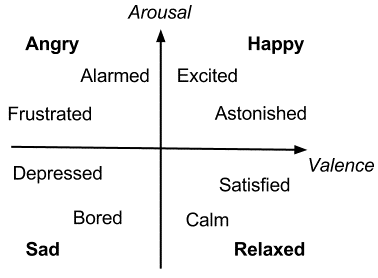
Tense arousal can be divided further into two types of anxiety: trait anxiety and state anxiety. One refers to the degree we respond to the environment in general negatively and with worry, while state anxiety refers to feelings of apprehension that occur in response to a particular situation.
Arousal originates from several sources. It can be generated by a stimulus that has an arousing function and a cue function. But background stimuli that do not capture our attention also increase arousal.
Thayer found that arousal varies with time of day, for many of us being highest around noon and lower in the morning and evening. Coffee, for example, can boost arousal, as can an instance of being evaluated during exams, music performance, or sports competitions.
Arousal also depends on more complex variables like novelty, complexity, and incongruity. The interaction of various stimuli explains why sometimes arousal increases behavioral efficiency and in other instances, decreases it.
Optimal functioning hypothesis
The zone of optimal functioning hypothesis in sports psychology identifies a zone of optimal arousal where an athlete performs best (Hanin, 1989). As arousal increases, performance on a task increases and then decreases, as can be seen on the inverted-U arousal–performance relationship diagram below.
According to the zone of optimal functioning hypothesis, each individual has her preferred area of arousal based on cognitive or somatic anxiety. The Yerkes–Dodson law explains further that the high point of the inverted-U or arousal–performance relationship depends on the complexity of the task being performed.
Several theories have been proposed to explain the relationship between the inverted-U nature of the arousal–performance relationship.
Hull–Spence drive theory
The classic Hull–Spence drive theory emphasizes how arousal affects performance with little regard for any cognitive awareness by the individual. Also known as drive reduction theory, it postulates that human behavior could be explained by conditioning and reinforcement.
This oversimplification is part of the reason why more nuanced and complex cognitive theories have largely replaced the theory. The cusp catastrophe model in sports psychology, arousal-biased competition theory, processing efficiency theory, and attentional control theory are more concerned with the cognitive aspects of arousal and how this affects behavioral efficiency.
Arousal-biased competition theory
Mather and Sutherland (2011) developed an arousal-biased competition theory to explain the inverted-U arousal–performance relationship. It suggests that arousal exhibits biases toward information that is the focus of our attention.
Arousal effects and therefore increases the priority of processing important information and decrease the priority of processing less critical information. The presence of arousal improves the efficiency of behavior that concerns a crucial stimulus, but it is done at the expense of the background stimuli.
Two memory systems theory
Metcalfe and Jacobs (1998) postulated the existence of two memory systems that influence the level of arousal we experience: a cool memory system and a hot memory system, each in a different area of the brain. The cool system, located in the hippocampus, serves the memory of events occurring in space and time and would allow us to remember where we parked our car this morning.
The hot system in the amygdala serves as the memory of events that occur under high arousal. Metcalfe and Jacobs theorized that the hot system remembers the details of stimuli that predict the onset of highly stressful or arousing events, such as events that predict danger and is responsible for the intrusive memories of individuals who have experienced extremely traumatic events.
Processing efficiency theory
The processing efficiency theory of Eysenck and Calvo theorized on how anxiety, expressed as worry, can influence performance. Preoccupation with being evaluated and being concerned about one’s performance turns to worry, which takes up working memory capacity and causes performance on cognitive tasks to decline (Eysenck & Calvo, 1992).
Textbooks on Motivation
Here are a suggested book references for tertiary-level study of motivation for those who want to dive deeper into some of these topics:
1. Understanding Motivation and Emotion – Johnmarshall Reeve
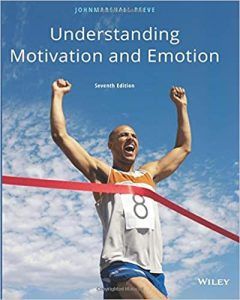
IT provides a toolbox of practical interventions and approaches for use in a wide variety of settings.
Available on Amazon.
2. Motivation: Theories and Principles – Robert C. Beck
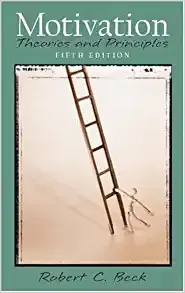
It covers a broad range of motivational concepts from both human and animal theory and research, with an emphasis on the biological bases of motivation.
Available on Amazon.
3. Motivation – Lambert Deckers
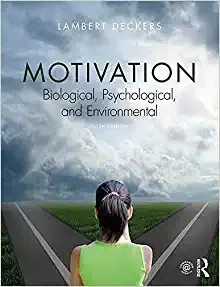
How motivation is the inducement of behavior, feelings, and cognition.
Available on Amazon.
4. Motivation and Emotion Evolutionary Physiological, Developmental, and Social Perspectives – Denys A. deCatanzaro
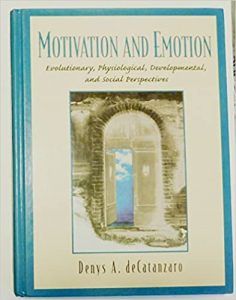
Available on Amazon.
5. Motivation: A Biosocial and Cognitive Integration of Motivation and Emotion – Eva Dreikurs Ferguson
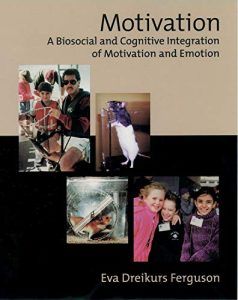
These include hunger and thirst, circadian and other biological rhythms, fear and anxiety, anger and aggression, achievement, attachment, and love.
Available on Amazon.
6. Human Motivation – Robert E. Franken
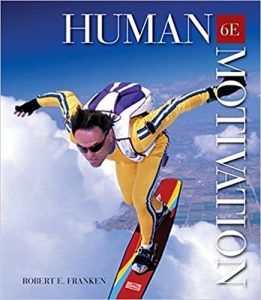
Available on Amazon.
7. The Psychology of Action: Linking Cognition and Motivation to Behavior – Peter M. Gollwitzer and John Bargh
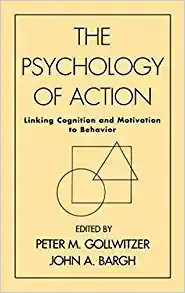
These programs are effectively mapping the territory, providing new findings, and suggesting innovative strategies for future research.
Available on Amazon.
8. Motivation and Self-Regulation Across the Life Span – Jutta Heckhausen and Carol S. Dweck

Available on Amazon.
9. Reclaiming Cognition: The Primacy of Action, Intention, and Emotion (Journal of Consciousness Studies) – Rafael Nunez and Walter J. Freeman
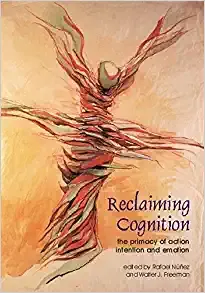
This leads to the claim that cognition is representational and best explained using models derived from AI and computational theory. The authors depart radically from this model.
Available on Amazon.
10. Motivation: Theory, Research, and Applications – Herbert L. Petri and John M. Govern
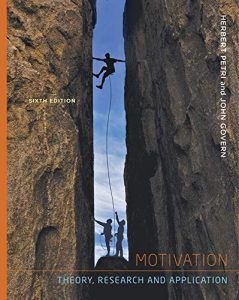
The book clearly presents the advantages and drawbacks to each of these explanations, allowing readers to draw their own conclusions.
Available on Amazon.
11. Intrinsic & Extrinsic Motivation: The Search for Optimal Motivation and Performance – Carol Sansone and Judith M. Harackiewicz
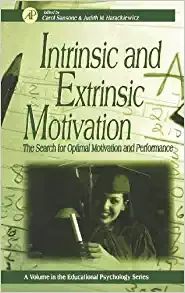
Available on Amazon.
12. The Psychobiology of Human Motivation (Psychology Focus) – Hugh Wagner
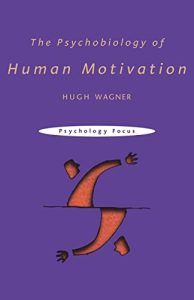
It starts from basic physiological needs like hunger and thirst, to more complex aspects of social behavior like altruism.
Available on Amazon.
A Take-Home Message
There is no shortage of explanations for what constitutes human motivation, and the research on the topic is as vast and dense as the field of psychology itself. Perhaps the best course of action is to identify the motivational dilemma we’re trying to solve and then select one approach to motivation if only to try it out.
By annihilating desires you annihilate the mind. Every man without passions has within him no principle of action, nor motive to act.
Claude Adrien Helvetius, 1715–1771
As Dan Kahneman argues, teaching psychology is mostly a waste of time unless we as students can experience what we are trying to learn or teach about human nature and can deduce if it is right for us.
Then and only then, can we choose to act on it, move in the direction of change, or make a choice to remain the same. It’s all about experiential learning and connecting the knowledge we acquire to our own experience.
What motivational theory do you find most useful?
We hope you enjoyed reading this article. Don’t forget to download our three Goal Achievement Exercises for free.
- Image 1: Maslow pyramid adapted from “Renovating the Pyramid of Needs: Contemporary Extensions Built upon Ancient Foundations” by D. T. Kenrick et al., 2010, Perspectives on Psychological Science, 5, 292–314 (see p. 293), and from “A Theory of Human Needs Should Be Human-Centered, Not Animal-Centered: Commentary on Kenrick et al. (2010)” by S. Kesebir et al., 2010, Perspectives on Psychological Science, 5, 315–319 (see p. 316), and from “Human Motives, Happiness, and the Puzzle of Parenthood: Commentary on Kenrick et al. (2010)” by S. Lyubormirsky & J. K. Boehm, 2010, Perspectives on Psychological Science, 5, 327–334.
- Adams, J. S. (1965). Inequity in social exchange. Advances in experimental social psychology (Vol. 2, pp. 267-299). New York, NY: Academic Press.
- Bandura, A. (1986). Social foundations of thought and action. In D. Marks (Ed.), The health psychology reader (pp. 23-28). Englewood Cliffs, NJ: Sage.
- Baumeister, R. F., & Tierney, J. (2011). Willpower: Rediscovering the greatest human strength. New York, NY: Penguin.
- Brehm, J. (1966). A theory of psychological reactance. New York, NY: Academic Press.
- Carver, C. S., Scheier, M. F., & Weintraub, J. K. (1989). Assessing coping strategies: A theoretically based approach. Journal of Personality and Social Psychology, 56(2), 267-283.
- Csíkszentmihályi, M. (1975). Beyond boredom and anxiety: The experience of play in work and games. San Francisco, CA: Jossey-Bass.
- Diener, C. I., & Dweck, C. S. (1978). An analysis of learned helplessness: Continuous changes in performance, strategy, and achievement cognitions following failure. Journal of Personality and Social Psychology, 36(5), 451-462.
- Dweck, C. S. (2006). Mindset: The new psychology of success. New York, NY: Balantine Books.
- Eccles, J. (2009). Who am I and what am I going to do with my life? Personal and collective identities as motivators of action. Educational Psychologist, 44(2), 78-89.
- Eccles, J. S., & Wigfield, A. (2002). Motivational beliefs, values, and goals. Annual Review of Psychology, 53(1), 109-132.
- Eysenck, M. W., & Calvo, M. G. (1992). Anxiety and performance: The processing efficiency theory. Cognition & Emotion, 6(6), 409-434.
- Festinger, L. (1957). A theory of cognitive dissonance. Stanford, CA: Stanford University Press.
- Gollwitzer, P. M. (1999). Implementation intentions: strong effects of simple plans. American Psychologist, 54(7), 493-503.
- Gollwitzer, P. M., & Kinney, R. F. (1989). Effects of deliberative and implemental mind-sets on illusion of control. Journal of Personality and Social Psychology, 56(4), 531-542.
- Gordon, R. M. (1987). The structure of emotions. Cambridge, UK: Cambridge University Press.
- Hanin, Y. L. (1989). Interpersonal and intragroup anxiety in sports. In D. Hackfort & C. D. Spielberger (Eds.), Anxiety in sports: An international perspective (pp. 19-28). New York, NY: Hemisphere.
- Harmon-Jones, E., & Mills, J. (Eds.). (1999). Science conference series. Cognitive dissonance: Progress on a pivotal theory in social psychology. Washington, DC: American Psychological Association.
- Higgins, E. T. (1997). Beyond pleasure and pain. American Psychologist, 52(12), 1280-1300.
- Kenrick, D. T., Griskevicius, V., Neuberg, S. L., & Schaller, M. (2010). Renovating the pyramid of needs: Contemporary extensions built upon ancient foundations. Perspectives on Psychological Science, 5(3), 292-314.
- Kesebir, S., Graham, J., & Oishi, S. (2010). A theory of human needs should be human-centered, not animal-centered: Commentary on Kenrick et al. (2010). Perspectives on Psychological Science, 5(3), 315-319.
- Locke, E. A., & Latham, G. P. (1990). A theory of goal setting & task performance. Englewood Cliffs, NJ: Prentice-Hall.
- Locke, E. A., & Latham, G. P. (2002). Building a practically useful theory of goal setting and task motivation: A 35-year odyssey. American Psychologist, 57(9), 705-717.
- Lyubomirsky, S., & Boehm, J. K. (2010). Human motives, happiness, and the puzzle of parenthood: Commentary on Kenrick et al.(2010). Perspectives on Psychological Science, 5(3), 327-334.
- Markus, H. (1977). Self-schemata and processing information about the self. Journal of Personality and Social Psychology, 35(2), 63-78.
- Mather, M., & Sutherland, M. R. (2011). Arousal-biased competition in perception and memory. Perspectives on Psychological Science, 6(2), 114-133.
- Metcalfe, J., & Jacobs, W. J. (1998). Emotional memory: The effects of stress on “cool” and “hot” memory systems. In D. L. Medin (Ed.), The psychology of learning and motivation: Advances in research and theory (Vol. 38, pp. 187-222). New York, NY: Academic Press.
- Miller, W. R., & Seligman, M. E. (1975). Depression and learned helplessness in man. Journal of Abnormal Psychology, 84(3), 228-238.
- Oyserman, D., Bybee, D., & Terry, K. (2006). Possible selves and academic outcomes: How and when possible selves impel action. Journal of Personality and Social Psychology, 91(1), 188-204.
- Reeve, J. (2014). Understanding motivation and emotion (6th ed.). Hoboken, NJ: Wiley.
- Ryan, R. M., & Deci, E. L. (2000). Self-determination theory and the facilitation of intrinsic motivation, social development, and well-being. American Psychologist, 55(1), 68-78.
- Sheldon, K. M., & Elliot, A. J. (1999). Goal striving, need satisfaction, and longitudinal well-being: The self-concordance model. Journal of Personality and Social Psychology, 76(3), 482–497.
- Skinner, E. A. (1996). A guide to constructs of control. Journal of Personality and Social Psychology, 71(3), 549-570.
- Thayer, R. L. (1989). The experience of sustainable landscapes. Landscape Journal, 8(2), 101-110.
- Vroom, V. H. (1964). Work and motivation. New York, NY: Wiley.
- Wiener, B. (1986). Attribution, emotion, and action. In R. M. Sorrentino & E. T. Higgins (Eds.), Handbook of motivation and cognition: Foundations of social behavior (pp. 281–312). New York, NY: Guilford Press.
- Zimmerman, B. J. (2000). Attaining self-regulation: A social cognitive perspective. In M. Boekaerts, P. R. Pintrich, & M. Zeidner (Eds.), Handbook of self-regulation (pp. 13-39). San Diego, CA: Academic Press.
Let us know your thoughts
Read other articles by their category
- Body & Brain (49)
- Coaching & Application (57)
- Compassion (26)
- Counseling (51)
- Emotional Intelligence (24)
- Gratitude (18)
- Grief & Bereavement (21)
- Happiness & SWB (40)
- Meaning & Values (26)
- Meditation (20)
- Mindfulness (45)
- Motivation & Goals (45)
- Optimism & Mindset (34)
- Positive CBT (28)
- Positive Communication (20)
- Positive Education (47)
- Positive Emotions (32)
- Positive Leadership (18)
- Positive Parenting (4)
- Positive Psychology (33)
- Positive Workplace (37)
- Productivity (16)
- Relationships (46)
- Resilience & Coping (36)
- Self Awareness (21)
- Self Esteem (38)
- Strengths & Virtues (32)
- Stress & Burnout Prevention (34)
- Theory & Books (46)
- Therapy Exercises (37)
- Types of Therapy (64)
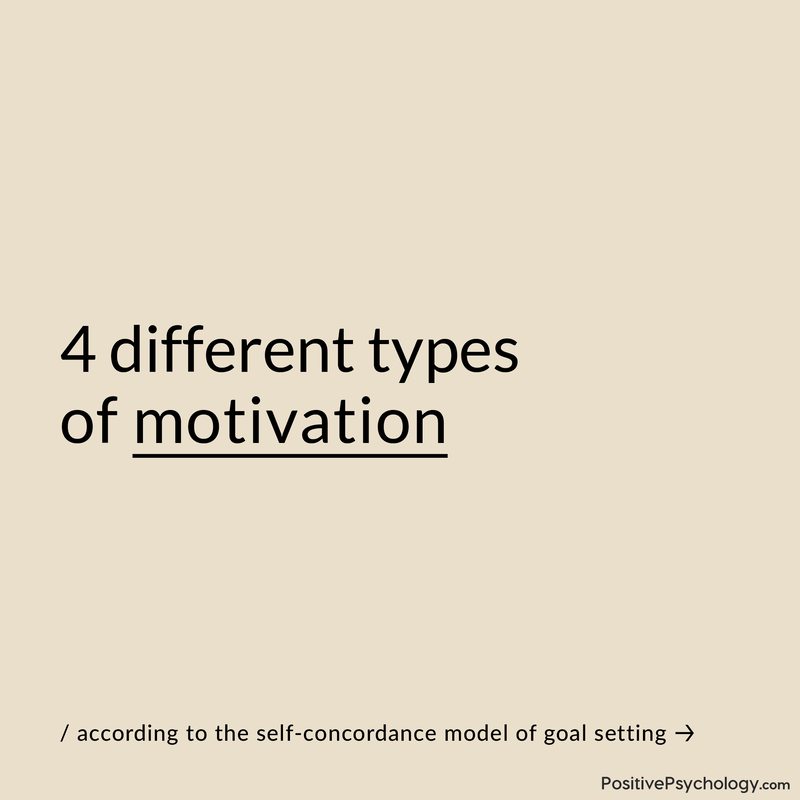
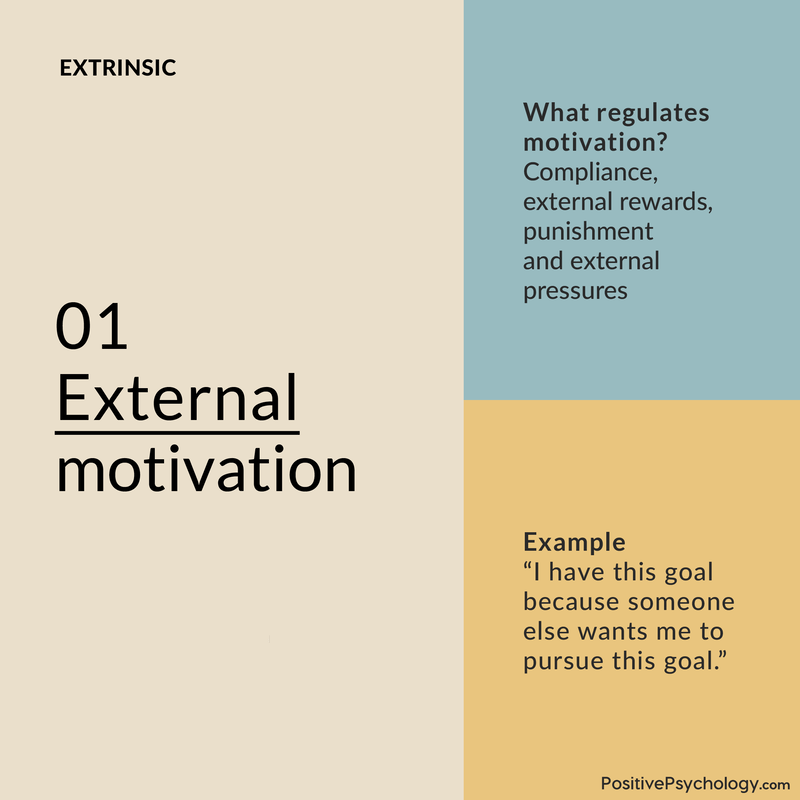
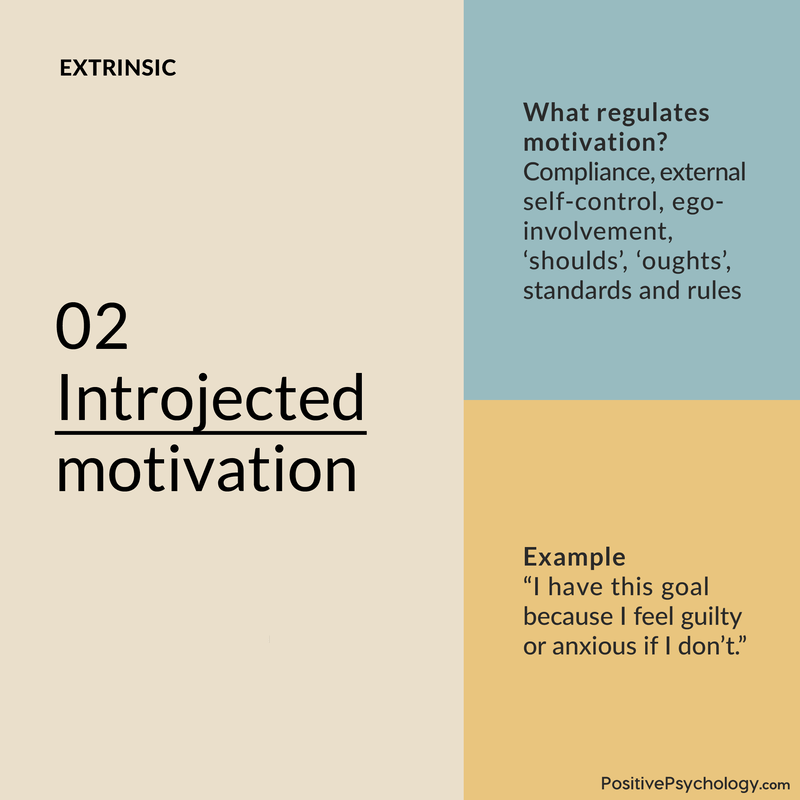
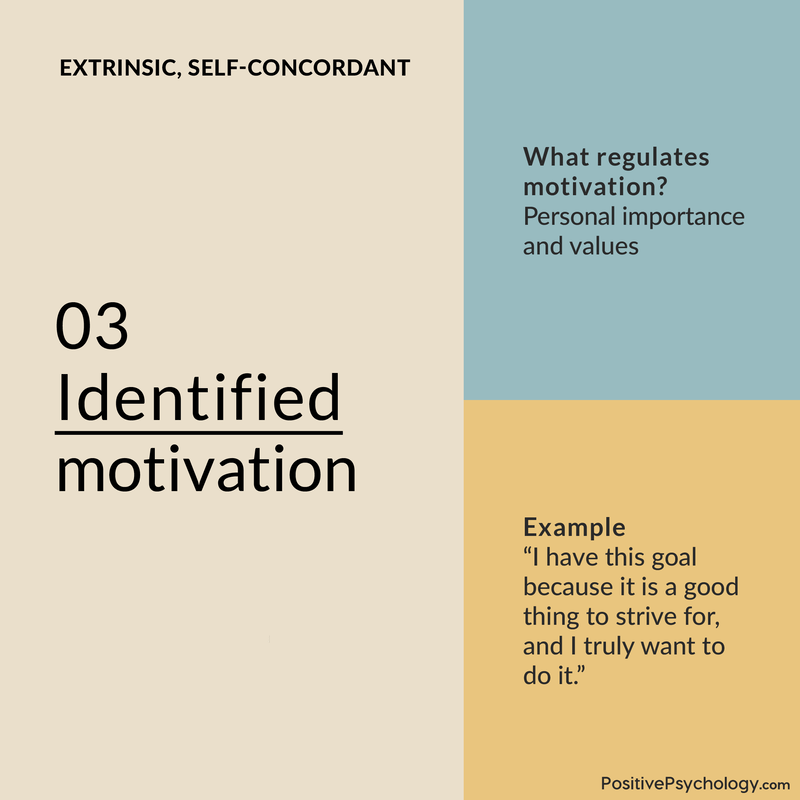
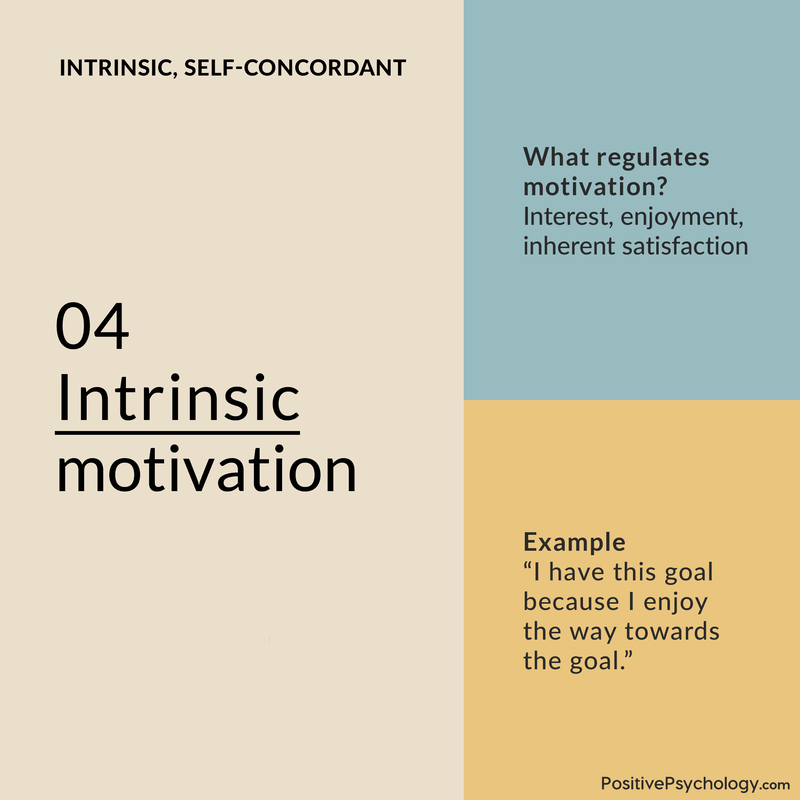

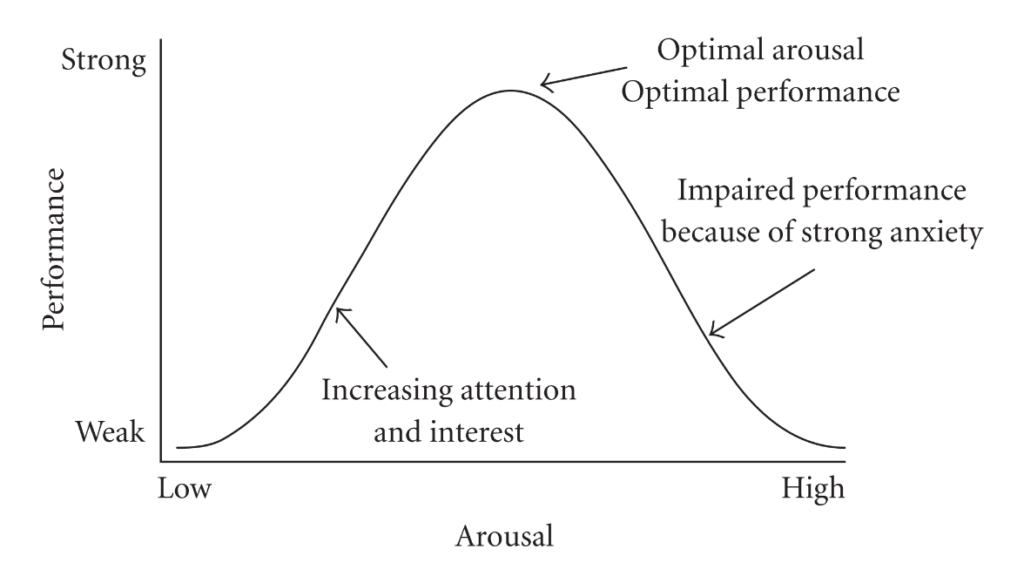




What our readers think
Hi Nicole, I love this site! I am a PhD student but in international development, not psychology and my methodology is multi-disciplinary, but that is quite difficult I am finding now I am looking at psychology! I have been sent down a path by an Australian academic about the role of action to motivation to action – do you have any good references to recommend on this? Thx, Sue Cant, Charles Darwin University
Hi Sue,
It sounds like you’re delving into an exciting interdisciplinary study! The role of action and motivation is indeed a key topic in psychology and relevant to international development too.
First, you might find “Self-Determination Theory” by Richard M. Ryan and Edward L. Deci interesting. It delves into the relationship between motivation, action, and human behavior, exploring how our needs for autonomy, competence, and relatedness influence our motivation and actions.
Another reference to consider is “Mindset: The New Psychology of Success” by Carol S. Dweck. It explores the concept of “growth mindset” and how our beliefs about our abilities can impact our motivation to act and overcome challenges.
These references should provide a good starting point for understanding the psychological aspects of action and motivation. I hope they prove useful for your research!
Best of luck with your PhD journey!
Kind regards,
Julia | Community Manager
I enjoyed the fact that there is plenty information, if I were to write an essay on Motivation.
It’s so informative and inclusive!
I just wonder if there are relevant theories on how to motivate communities (e.g. residents, companies, experts) to participate in decision-making (e.g. protection of cultural heritage)? Thank you!
Hi Sunny,
Glad you liked the article! I’m not sure if there are theories that specifically cover this (they may be more in sociology and a bit beyond my expertise). But I’d recommend having a read of my article on positive communities. If you follow some of the references throughout, I suspect you’ll find some great resources and advice, particularly on participative decision-making: https://positivepsychology.com/10-traits-positive-community/
Hope this helps a little!
– Nicole | Community Manager
Deci and Ryans Self Determination Theory needs to be discussed… NOT just given an afterthought. Their argument that human behaviour is driven by the 3 fundamental needs of 1) Affiliation 2) Competence and 3) Self Determination is supported by developmental science (attachment theory, Tomosello’s cross species work, developmental work on competence and learning, and finally the huge body of work on intrinsic motivation and self-regulation.
This overview is well written but appears to have a big hole in it.
Hi Dr. Martin,
Thanks for your comment. We agree SDT is a powerful theory, and it has many different applications. We’ve addressed these in depth in some of our other articles on the topic:
Self-Determination Theory of Motivation: Why Intrinsic Motivation Matters – https://positivepsychology.com/self-determination-theory/
21 Self-Determination Skills and Activities to Utilize Today: https://positivepsychology.com/self-determination-skills-activities/
Intrinsic Motivation Explained: 10 Factors & Real-Life Examples: https://positivepsychology.com/intrinsic-motivation-examples/
– Nicole | Community Manager
Hey Nicole. This summary is amazing and pin points what I’m looking for. In the case where I have to evaluate this theory for example Maslow’s hierarchy theory in relation to an organization’s needs. How do I go about that or what’s the best way to do so?
Hi Deborah,
So glad you enjoyed the article. Could you please give a little more information about what you’re looking to do? For instance, are you looking for a theory you can apply to assess individual employees’ motivation at work? Note that not all of the theories discussed here are really applicable to an organizational context (e.g., I would personally avoid Maslow’s hierarchy for this), so it would be helpful to have a little more information.
Thanks!
– Nicole | Community Manager
Yes. Precisely that.
I am looking for theories that I am adapt to do an intervention , implementation and evaluation of employee motivation in an organization. And how exactly these theories are implemented.
Thank you Nicole. Excellent summary of available theories.
Could you tell me please which may be the best theory to explain involvement in extremism and radicalization?
Hi Roger,
Glad you liked the article. Research on motivations underlying extremism and radicalization tend to point to our beliefs having a central role. This paper by Trip et al. (2019) provides an excellent summary of the thinking in this space. It looks at the factors from an REBT perspective. It addresses a whole range of motivational perspectives including uncertainty-identity theory and integrated threat theory.
I hope this article is helpful for you.
– Nicole | Community Manager